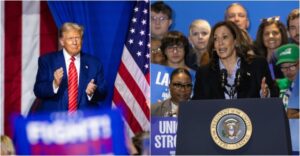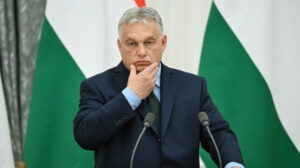“Traditionally” in these battles, happening since 2016, it’s not so much the message that plays an important role as the targeting of a specific audience. The science behind a campaign for a presidential candidate is beyond complicated and extremely costly, and the funds that the blue and red camps draw on are pivotal. The winner may not be determined by how much capital is spent in total, but fundraising down the stretch has long been a critical indicator of how the markets, capital, and much of American society perceive or “read” the stakes of the election.
Blue power in economics – Red backlash in key states
On economics, even if Kamala Harris fails to be elected president and become the first woman to lead the world’s most powerful economy, she has already managed to outperform all previous candidates from both parties. Since Harris received the Democratic nomination on August 5, nearly $1 billion has been raised for her campaign. Barack Obama, by far the most popular president for Democrats, had nearly $800 million in 2012, his first run for the nomination, a record amount for the blue party. Barack Obama and his staff had raised those funds in a year while Harris has done it in just three months. It’s worth noting that in September alone, Democrats raised more than $221 million when the Trump campaign announced $62.7 million in donations. The ratio is 3 to 1 for Democrats despite constant financial injections from Elon Musk who has gone so far as to give $1 million to an American every day they register to vote in the seven “key” states.
At the opposite end of the spectrum, Donald Trump, despite his sprint in recent months, has failed to come close to Harris’s $1 billion despite having managed to raise nearly $860 million. The distances as the days to the polls shorten seem to grow and the Democratic data will win the financial battle and by a significant margin. At the end of the road, of course, the issue always in presidential campaigns is who will have the “magic” number of 270 electoral votes that will make him the 47th President of the country.
On this key issue, Donald Trump seems to have managed on the one hand to “erase” Harris’s substantial lead nationally and on the other hand has made a lasting and targeted counterattack in the seven critical states that have been “Presidential” since his first appearance in politics in 2016 until now. Based on the data of 13 pan-American and state polls, Kamala Harris leads on average 49.7% against Trump’s 47.4% nationally but this in 2016 was not enough for Joe Biden who won the national vote but not the electoral votes. In the crucial states Trump now appears to have a lead in four of the seven while one also records something rare, Trump and Harris have the same percentage. Specifically, Republicans appear strong in Georgia, Nevada, Arizona, and North Carolina while Harris has a lead, albeit slim, in Pennsylvania and Michigan. In the state of Wisconsin, it will be a battle to the finish as both “gladiators” are in a dead heat with 48.2% each.
The Republican message has changed focus and is causing upsets
The picture in the seven crucial states that have a sufficient number of electoral votes to make a difference, analysts say, is the result of the change Donald Trump’s campaign is registering. The Trump staff may not be able to restrain the 45th US President from bashing Kamala Harris in his speeches, but it has managed to convince him to spend the funds at his fingertips on very specific and, more importantly, highly targeted messages. More specifically, based on the study by AdImpact which looks at aggregate ad spending by message and by political party in each state, it shows that in the last quarter the Republicans have made significant changes and have been able to make those changes pay off. More specifically, the “spearhead” for Republicans and Trump himself until last August was immigration and security, an area where in August his staff was spending 69% of the total available ad dollars.
Currently, the money spent on the “closed border” and southern wall project is at 23.5% and only $11.6 million will be provided in October. The picture is completely different on the rights part of the LGBTQ community with whom Trump has had and continues to have an open “war”. His campaign, however, has a completely different focus. Of the $0 (zero – literally) dollars given for messaging to this social group in August and September today, a decision has been made to spend more than $21 million. It is the second largest advertising expenditure after tax on messages for which $25 million will be given. The change of targeting on the part of the Republicans may not change Trump’s public image but that is of no concern to the former President who in 2016 shortly before the launch of his then campaign had become a front-page story about sexual assaults, some of which he has even been convicted of today.
Ask me anything
Explore related questions





